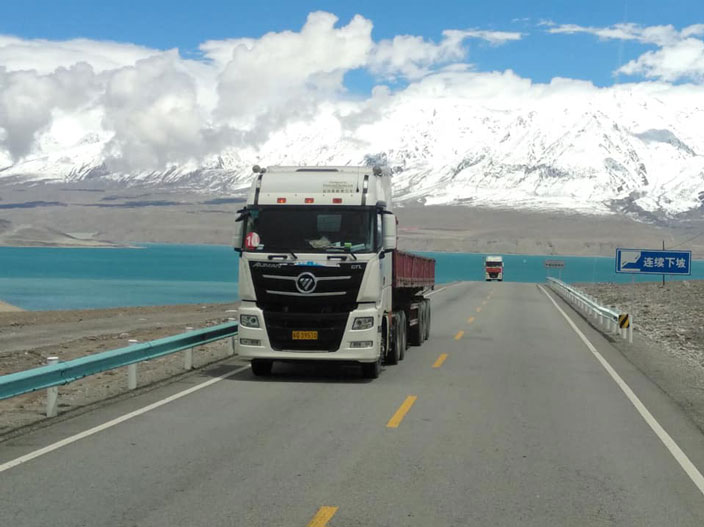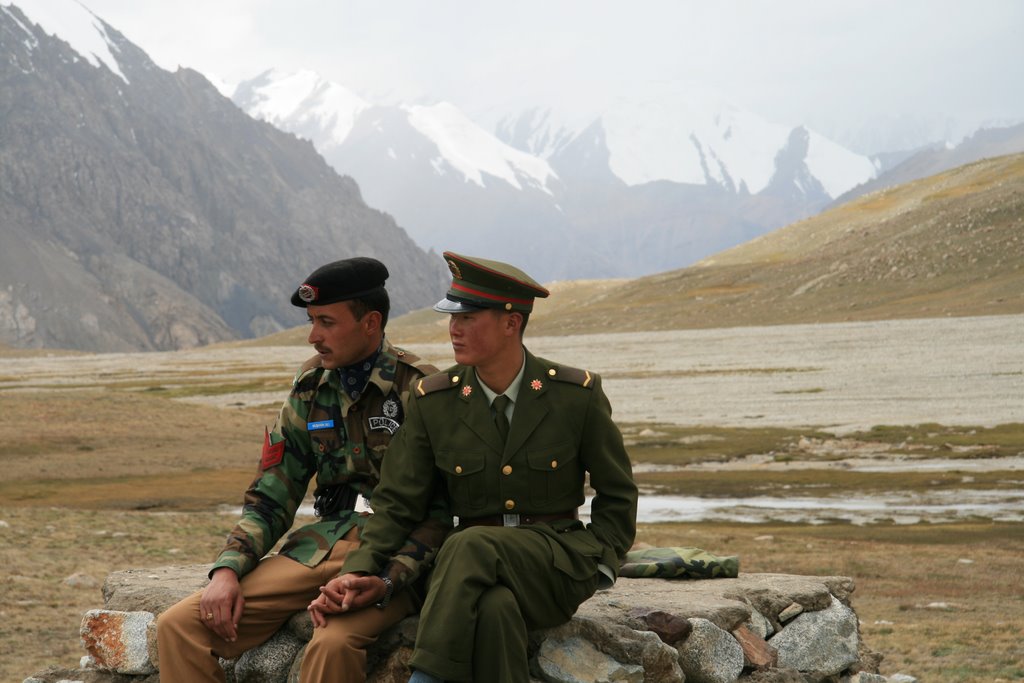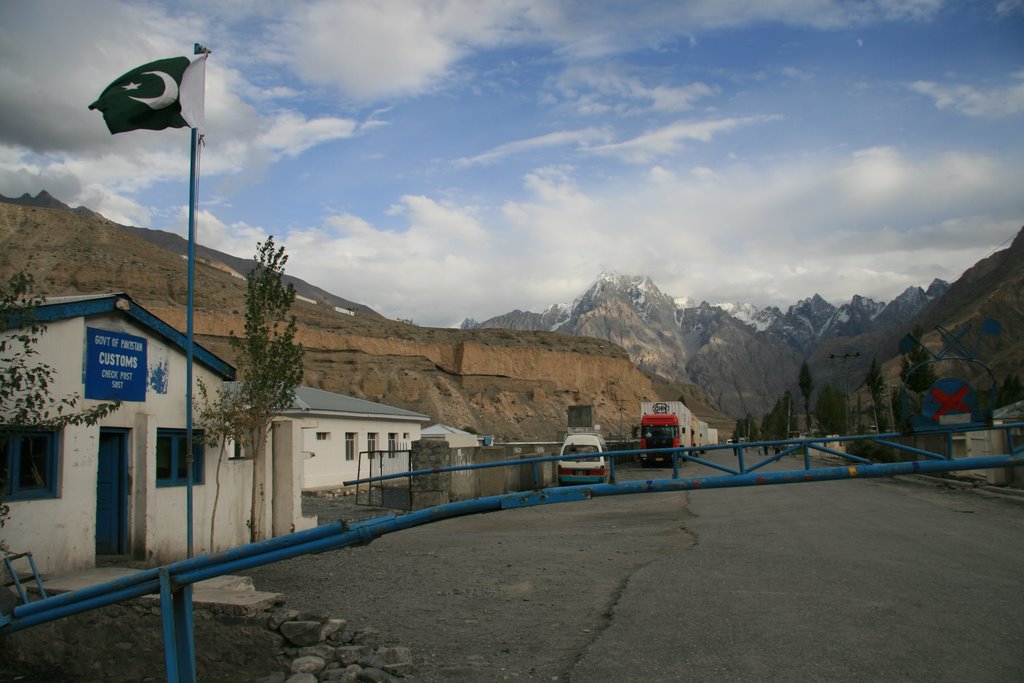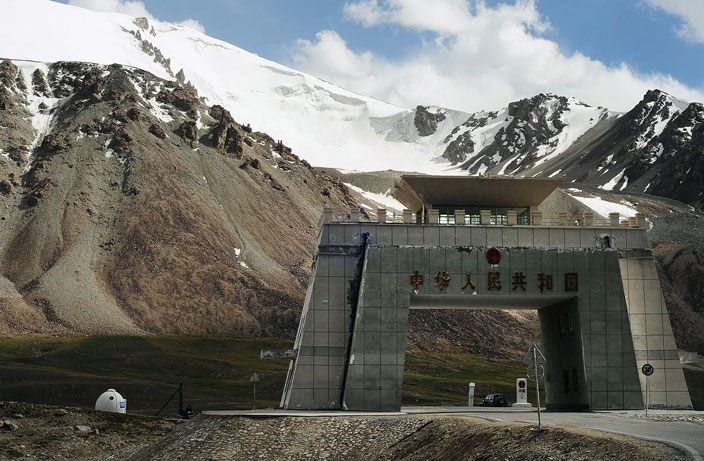This feature is part four of our November 2019 cover story, ‘The Borderlands: Dispatches from the Edge of China.’ To read more interesting stories from the edge of China, click here.
“Traveling from Kunming to Kashgar via Urumqi is full of wonders,” Tamoor Malik tells me via email, recounting his July 2018 journey from Yunnan province to Pakistan. “At one point, we were passing through rocky and hilly terrain, and then starts the desert – with red sand and strong winds. Windmills and crude oil pumping stations were a very common sight along the way, [showing] how energy-rich the area is.”
Malik, a 31-year-old university student completing a Masters in Statistics in Kunming since 2016, and who originally hails from Ghakhar Mandi in Pakistan’s Punjab province, has traveled across the PRC-Pakistan border twice. When he first meets me at a hotel buffet in rural Guizhou, his cross-border adventures are among the first stories the passionate travel enthusiast shares.

Tamoor Malik somewhere along the Karakoram Highway. Image via Tamoor Malik
The main route crossing from China into Pakistan is a stunning stretch of asphalt known around the world as the Karakoram Highway (known in China as Highway 314). The road, which runs over 1,200 kilometers from just north of Kashgar in China’s Xinjiang Uygur Autonomous Region to Abbottabad, Pakistan, is occasionally referred to as the ‘Eighth Wonder of the World.’ The route is among the highest highways on the globe, and is surrounded by some of the most stunning and diverse scenery in Asia: towering peaks and glaciers, roaring rivers, mountain meadows, you name it.
On the Chinese portion of the highway, travelers will pass two other international borders – the China-Afghanistan and China-Tajikistan lines.
READ MORE: A Line in The Sand: Crossing the China-Mongolia Border

The Karakoram Highway. Image via Tamoor Malik
The last notable settlement along the Chinese side of the Karakoram is Tashkurgan – the administrative seat of Tashkurgan Tajik Autonomous County. Set along the highway, Tashkurgan is inhabited by folks of the Tajik ethnicity, alongside a significant population of Han laborers, according to former That’s editor Daniel Plafker, who covered the region for our annual Explore China travel guide.
“The journey from Kashgar to Tashkurgan is like traveling in paradise,” says Malik. “It seems as if a painter has made a masterpiece with his eternal brush, containing trees, lakes, meadows, rivers and mountains.
“I traveled [the road] twice, once from China to Pakistan and once from Pakistan to China,” Malik continues. “My first journey from China to Pakistan was in July of 2018. On my second trip, I used the Karakoram Highway from Pakistan to China. That was in May of 2019.”
“If you want to experience the glory of paradise, visit this route”
On his first grand, overland adventure, Malik opted for the slow train from Kunming to Urumqi, which took 45 hours. From there, he caught a 23-hour train to Kashgar.
“I was the only foreigner on board,” says Malik, explaining that only himself and the train staff completed the entire journey. “All the locals were extremely excited to see me among them and everybody was trying to talk to me. They repeated the popular slogan ‘Pakistan and China – Iron Brothers.’”
From Kashgar to the Pakistan border, he passed through Tashkurgan en route to Khunjerab Pass – the world’s highest elevation border crossing. On the Pakistani side lies – allegedly - the world’s highest ATM machine, a solar-powered cash dispenser operated by the National Bank Of Pakistan (NBP).

Border guards from China and Pakistan at the Khunjerab Pass. Image via Wikimedia
To cross the border into Pakistan from China, Malik notes that it is necessary to purchase an international bus route ticket with a passport, and that the Pakistan-China border crossing is closed on weekends (also public holidays in Pakistan and China, according to tour providers).
“You will have to show your ticket at [Chinese exit] immigration, which starts at around 10-11am,” says Malik. “After you are done with immigration and have gotten the exit stamp in your passport, you will go to the other side of the customs hall, where your transportation will be waiting for you. You will have either a Pakistani or Chinese driver, depending on which ticket you have got.”
Interestingly, the China-Pakistan border is very different from the other crossings discussed in this story – traveling between Chinese customs and Pakistani customs will take two to three hours. There is no immediate entry on the other side. On the Pakistani side, the customs and immigration office is based in Sost (or Sust), the last town before the Chinese border.
READ MORE: We Visited the Infamous Laos-China Border Town of Boten

The customs and immigration office in Sost. Image via Wikipedia
“On the Pakistan side of the border, immigration is very simple, they just ask you to open your luggage and show what you bought for your ‘cousins and relatives.’ That’s all, no scanning,” says Malik. “One picture, one stamp and you are free from the entry process.”
From Sost, most travelers will continue down the Karakoram Highway (known in Pakistan as N-35) to Gilgit, which serves as a center for hiking and mountaineering excursions in the Karakoram Range.
When I press Malik on why people should venture this route into Pakistan, he has a simple answer: “If you want to experience the glory of paradise, visit this route.”
Enjoy this story? Click here to read more features from our November 2019 cover story, ‘The Borderlands: Dispatches from the Edge of China.’
[Cover image via Wikimedia]






















0 User Comments